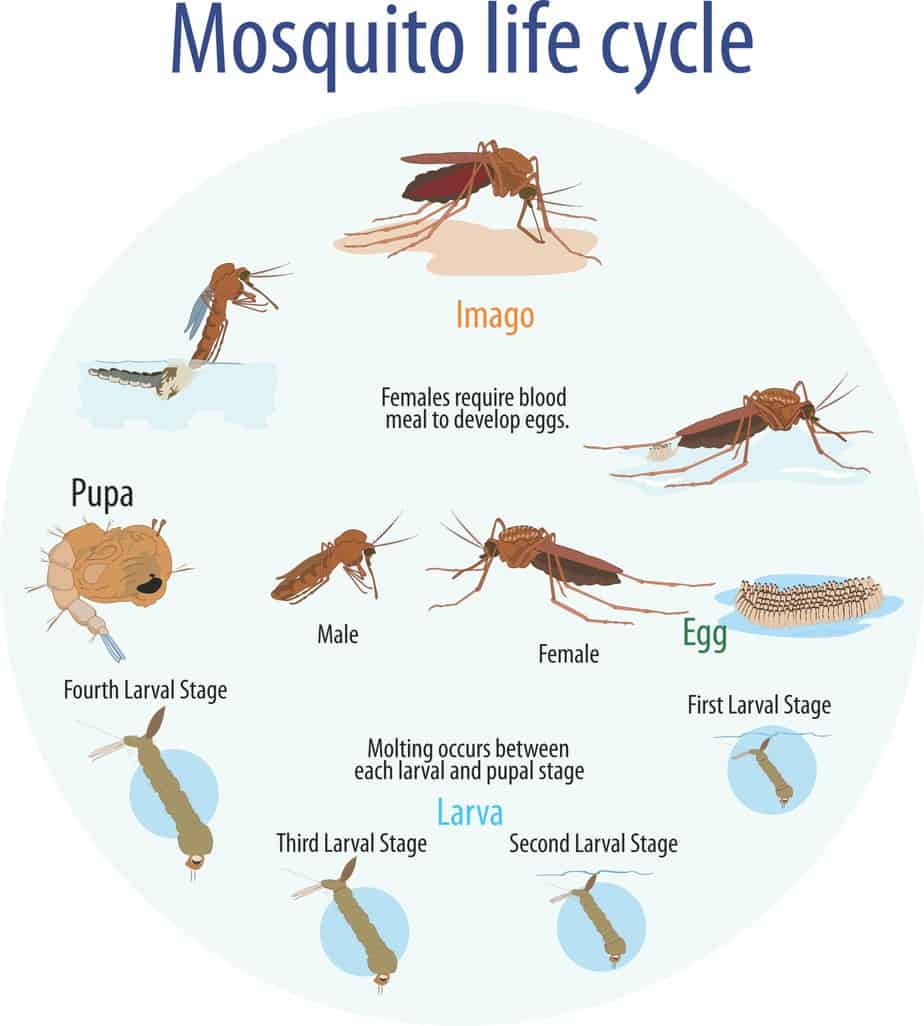It is a well-known fact that mosquitoes can be menacing to the well-being of humans. This is reason enough to enlighten people about the life cycle of these noisy and unfriendly insects.
Understanding how these creatures breed will go a long way in helping you prevent a mosquito infestation in your property.
Are you aware that adult female mosquitoes can lay eggs individually or in groups of more than hundred all at once?
These eggs can hatch within just two days; also, they can endure periods of extreme cold and dry conditions for as long as necessary before hatching. For the eggs to hatch successfully, they must be submerged into water. Hence, eliminating any body of stagnant water in your surroundings is an effective way of preventing mosquitoes from breeding.
A mosquito’s life cycle consists of four distinct stages, and they are: egg, larvae, pupa, and adult. Each of these four stages can be identified easily by its special appearance.
The Life Cycle of a Mosquito
Eggs
Every few days, female mosquitoes lay hundreds of eggs in moist environments, and this is a process that continues throughout the course of their lifespan. These eggs can be attached to other eggs and form rafts, a structure that is common among the Culex species. Other mosquito species like Aedes lay their eggs singly. The presence of water is vital for the hatching process which is usually completed within two days. After the eggs are hatched, the larvae emerge.
Larvae
Larvae are also known as “rollers”, and this is because of their appearance while swimming. The larva stage is also known as the baby stage. Larvae dwell under water and occasionally rise to the surface for breath. A mosquito larva molts its skin four times, growing noticeably bigger after each molt. Most larvae possess tubes which are utilized for breathing and suspend upside down from the surface of water. After completing the four stages of molting, the larvae become pupae.
Must Read :FASCINATING FACTS ABOUT MOSQUITOES
Pupae
The Pupae is considered the non-feeding and teenage stage of the life cycle. Just like larvae, pupae live under water and continue to swim around. They are also known as tumblers, and this is because when disturbed, they tumble down under water for safety. This is also why they are the most difficult to control. They are lighter than water so it’s easy for them to live on the surface where they must occasionally take in oxygen through their trumpets (breathing tubes). It is at this stage that the adult mosquito starts to develop, and the entire process can take up to four days, depending on the temperature of the water.
Adult
An adult mosquito will rest on the water with two major concerns: feeding and mating. As soon as its body is completely hardened and dry, and the wings have fully opened, it can take flight. The sound of a female mosquito’s wings is what attracts a male to her. After mating with a female mosquito, the male will go on to live three to five more days. On the other hand, the females go on to live for considerably longer periods, reaching at least one or even two months.
Do what you can to prevent mosquitoes from breeding in your property. The first thing you should do is to eliminate stagnant water. Also, do well to eliminate weeds and keep ornamental plants in your yard trimmed. In the event of an infestation, contact FullScope Pest Control to handle the situation. Pest control experts have the training, products and equipment to deal with any mosquito infestation problem effectively.
For the purpose of your health and safety, acting fast is always the best move. Before the mosquito season gets out of hand, take action. You might be surprised at how affordable mosquito control and eradication can be.
Pest Control Near You:
Call or Text 832-898-0190 or Request an Estimate:





